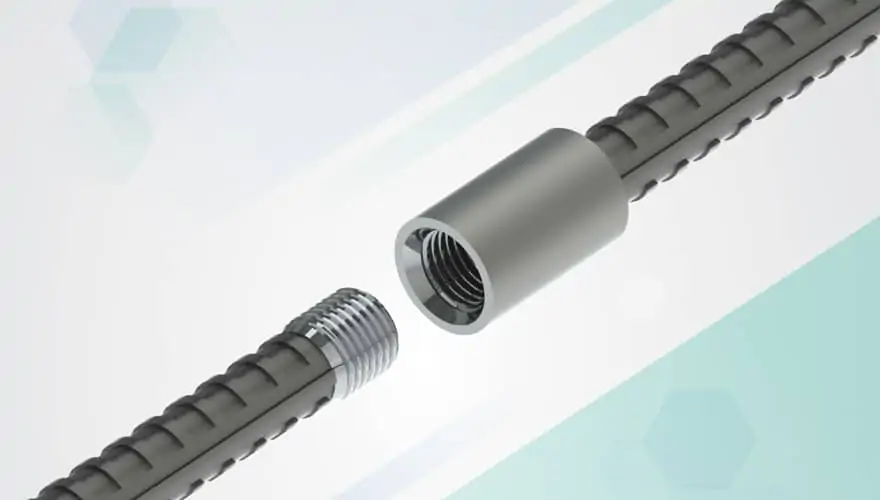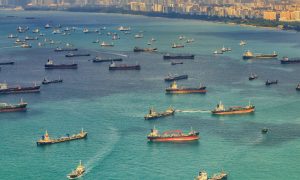
Marine tie bars – Ensuring structural integrity in coastal and offshore projects
Marine tie bars are tensile connecting elements that hold structural components together against the powerful forces in marine environments. Unlike conventional tie bars in standard construction, marine variants are specifically engineered to withstand the unique stresses and environmental attacks in coastal and offshore settings.
In harbour walls, marine tie bars typically connect the front-facing wall to an anchor wall buried within the backfill. This creates a unified structural system capable of resisting the immense lateral pressures from both water and soil. These bars provide tensile reinforcement in jetty construction, preventing the spreading or separating of key structural elements under wave impact and varying water pressures.
Marine tie bars often serve as critical tensioning members for offshore platforms that maintain structural geometry under dynamic loading conditions. Their ability to absorb and transfer tension forces helps ensure platform stability even during severe weather events, preventing catastrophic structural failures.
Material considerations for extreme environments
The selection of appropriate materials for marine tie bars represents the most crucial decision affecting their long-term performance. Several options exist, each offering distinct advantages and limitations:
- Duplex and super duplex stainless steels offer exceptional strength and corrosion resistance for marine tie bar applications. These specialized stainless steel variants contain higher chromium, molybdenum, and nitrogen content than standard grades, providing superior resistance to chloride-induced pitting and crevice corrosion. Their higher strength-to-weight ratio also allows for smaller diameter bars, reducing material costs while maintaining structural capacity.
- Hot-dip galvanized high-strength steel offers a more economical alternative with reduced service life expectations in fully immersed applications. The thick zinc coating provides sacrificial protection, gradually depleting as it protects the underlying steel. These systems often incorporate additional protective measures such as petrolatum tape wrapping or specialized marine epoxy coatings for partially immersed or splash zone applications.
- Titanium alloy tie bars provide unmatched corrosion resistance for projects demanding the highest performance levels, even in the most aggressive marine environments. Though significantly more expensive than steel alternatives, titanium’s exceptional durability and virtual immunity to seawater corrosion can justify the investment in critical applications with design lives exceeding 50 years.
- Fibre-reinforced polymer (FRP) composite tie bars represent an emerging non-metallic alternative, eliminating corrosion concerns. These systems use carbon or glass fibers in a polymer matrix to create high-strength tensile elements entirely immune to electrochemical degradation. While offering excellent corrosion resistance, their long-term performance history remains less established than that of metallic alternatives.
Design considerations beyond material selection
Creating effective marine tie bar systems requires consideration of several factors beyond essential material selection:
- End connection design demands particular attention, as these areas often experience stress concentration and are vulnerable to corrosion from water ingress. Modern marine tie bar systems typically incorporate specially designed sockets, threaded couplings, or forged end fittings that maintain the corrosion resistance of the entire assembly. These connections must be carefully detailed to prevent crevice corrosion and efficiently transfer force.
- Tension adjustment mechanisms allow initial tensioning and potential future adjustments to compensate for structural settlement or movement. These features typically include threaded components with locking systems that maintain tension settings despite vibration and cyclic loading. The accessibility of these adjustment points for future maintenance must be considered during the initial design.
- Protection systems for Marine Tie Bars frequently include multiple redundant layers, especially at vulnerable transitions and connections. Depending on the exposure conditions and design life requirements, these might incorporate sacrificial anodes, specialized marine-grade greases, elastomeric boots, or sealed encapsulation systems.
Ties represent specialized, engineered components essential to coastal and offshore construction. Proper selection, design, installation, and maintenance require specialized knowledge that bridges structural engineering principles with marine corrosion science. They will remain essential in creating durable structures capable of withstanding one of the most challenging environments on earth as coastal development expands globally.


